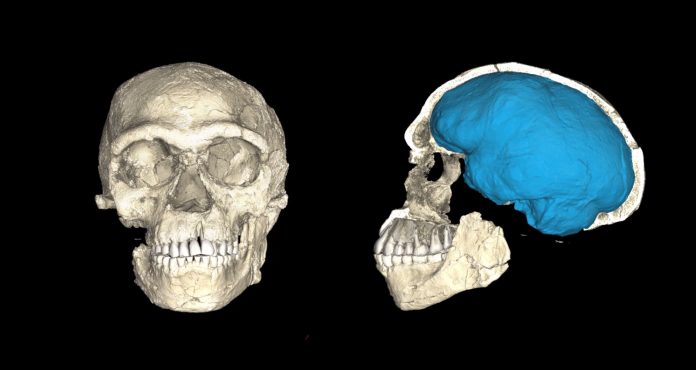What looks to be the oldest fossilized remains of Homo Sapiens have been unearthed out of Morocco. As it turns out, this discovery is shaking up everything the scientific community thought it knew about the origin of the human species.
The ancient fragments of skulls and jawbones were collected from an archaeological site called Jebel Irhoud along the Atlantic coast near Sidi Moktar. In a study published in Nature, researchers dated the remains to be 315,000 years old – a date that pushes the emergence of Homo Sapiens as a species back by 100,000. Just as importantly, scientists also found fire-heated flint artifacts at the site, which dated to the same time period and can give us some clues into how these early ancestors lived.
Before these findings, the prevalent theory up to now was that modern man first evolved about 200,000 years ago in East Africa. This is based on a collection of fossil discoveries in Ethiopia dated that far back. This led scientists to believe Sub Saharan East Africa was a sort of “cradle” for mankind and that we spread out to other parts of Africa from there.
However, these new finding challenge the notion that man walked out of some singular birthplace and indicates we may have instead formed distinct and coexistant groups across all of Africa. Lead researcher of the study, Jean-Jacques Hublin of the Max Planck Institute for Evolutionary Anthropology, likened prehistoric Africa to “a kind of human zoo”.
Les plus anciens Homo #sapiens mis au jour au Maroc par une équipe dirigée par le Pr Hublin et le P. Ben-Ncer : https://t.co/DBw1z6XAO6 pic.twitter.com/EKw0j0Xr3B
— Collège de France (@cdf1530) June 7, 2017
“We are moving further and further away from this linear vision of human evolution with a succession of species, one replacing the other,” Hublin said, according to the AFP. “There were probably several groups of hominins existing, overlapping in time… and having, I would say, complex relationships.”
“These new finding challenge the notion that man walked out of some singular birthplace”
The result of those complex relationships means we’ll likely find some intermingling of everything from tool technology to genes between the hominin groups across Africa over the course of time.
As for the people from Jebel Irhoud, we unfortunately can’t say how related they are to modern man on the genetic level. Hublin and his team tried and failed to extract DNA samples from the fossils. Physically, we can see that their faces are remarkably similar to modern humans. On the other hand, their brains were much more divergent and their skulls lack that characteristic bulge in the back developed later.
Still, they lie close enough to home on the family tree that we may be seeing some revisions to our current understanding of human evolutionary history in the near future.











